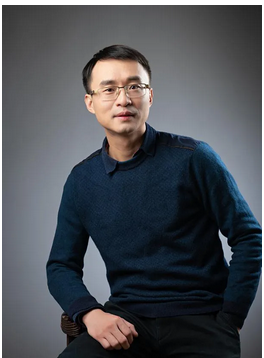【Meeting Notice】Translational Bioinformatics and Interdisciplinary Series Report (III)
Dear Colleagues,
The upcoming cloud forum on bioinformatics—Translational Bioinformatics and Interdisciplinary Series Report (III), hosted by the Chinese Bioinformatics Society (in preparation) and organized by the Sichuan Province Bioinformatics Society, will take place on June 8th, 2021 (Tuesday) from 10:00 to 11:30 Beijing Time. We are honored to have Professor Xue Yu from the School of Life Science and Technology at Huazhong University of Science and Technology to present on "Artificial Intelligence Biology: The New-generation Bioinformatics". The report will be introduced by Professor Sun Zhirong, chaired by Professor Shen Bairong, and attended by distinguished guests Professor Huang Jian, Professor Xie Dan, and Professor Li Shuaicheng. We warmly welcome all bioinformatics colleagues to actively participate.
01 Meeting Time
June 8th, 2021 (Tuesday) from 10:00 to 11:30
02 Meeting Format
The report will be conducted online via Tencent Meeting.
Participation Methods:
Open WeChat Mini Program → Search for Tencent Meeting → Click to Use Immediately → Enter the meeting number → Join the Meeting → Enter the password.
Join the meeting by clicking the link or add it to the meeting list:
Click here to join the meeting
Click "Read the original text" at the bottom left of the article to watch the meeting.
Meeting Number: 375 716 330
Meeting Password: 0610
03 Speaker

Professor Xue Yu
Professor Xue Yu is a professor at the School of Life Science and Technology, Huazhong University of Science and Technology, and the director of the Artificial Intelligence Biology Center (in preparation). His main research direction is artificial intelligence biology of protein modification and function. In recent years, he has closely focused on key issues in artificial intelligence biology such as modification site prediction, construction of modification and function data resources, and integration and functional inference of omics big data, adopting a research strategy that progresses from point to surface and layer by layer, achieving phased research results. In the past five years, he has published 25 SCI papers as the sole or co-corresponding author, including 8 papers with an impact factor greater than 10. All papers have been cited 6744 times in the past five years, with 14 papers cited more than 100 times, the highest citation of the main author's paper being 580 times, and an H-index of 36. He has applied for 13 invention patents, of which 3 have been authorized, and obtained 13 computer software copyright registration certificates. In 2010, he was selected for the "New Century Excellent Talents Support Program" of the Ministry of Education, in 2014, he was selected for the "Ten Thousand People Plan" for outstanding young talents by the Central Organization Department, and in 2017, he was selected for the "Yangtze River Scholars Reward Program" for young scholars by the Ministry of Education. In January 2013, he won the "Bronze Award for Young Scientist of the Year", and in October 2015, he won the "Great Challenge 2015 • Young Scientist" award jointly issued by the Ministry of Science and Technology and the Bill & Melinda Gates Foundation. He serves as an editorial board member of international journals such as Science Bulletin (IF=9.511), Genomics, Proteomics & Bioinformatics (IF=7.051), and Cells (IF=4.366), and has been a committee member of several international academic conferences, invited to give 13 special reports at international conferences. Since 2018, he has served as the secretary-general of the Hubei Province Bioinformatics Society.
03 Report Summary
Recent advances in deep learning have provided a great opportunity to accurately infer the complex causality from big biological data, and have spurred the establishment of a new interdisciplinary field named artificial intelligence biology (AIBIO). Here, we report our recent progress in AIBIO for PTM and COVID-19. First, we developed a new computational pipeline for integrating circadian multi-omics data (iCMod) to identify 789 (~17%) normalized circadian p-sites (NCPs), and predicted 27 potential circadian kinases to participate in phosphorylating these sites, including 7 previously known to function in the clock. We screened the remaining 20 kinases and found an additional 3 to be involved in shaping the temporal pattern of the entire circadian molecular landscapes. Using the plasma proteomic data of COVID-19 patients, we developed a machine learning-based method named POC-19 to identify 11 proteins as biomarkers and a set of biomarker combinations, which were validated by independent cohorts and accurately distinguished and predicted COVID-19 outcomes, including non-survivors and survivors recovered from mild or severe symptoms. In addition, we constructed an open resource named iCTCF that contains chest computed tomography (CT) images, 130 clinical features, and laboratory-confirmed clinical status. We demonstrate the utility of the database in predicting COVID-19 morbidity and mortality outcomes via a deep-learning algorithm named HUST-19, trained with data from 1170 patients and 19,685 manually labeled CT slices. In an independent validation cohort of 351 patients, the algorithm discriminated negative, mild, and severe cases with areas under the receiving operating characteristic curve of, respectively, 0.944, 0.860, and 0.884. The open database may find further uses in the diagnosis and management of COVID-19 patients.
04 Special Reminder
Except for special notifications, this series of reports is for personal learning only and is prohibited from being recorded, filmed, or disseminated in any form. Thank you for your cooperation!

